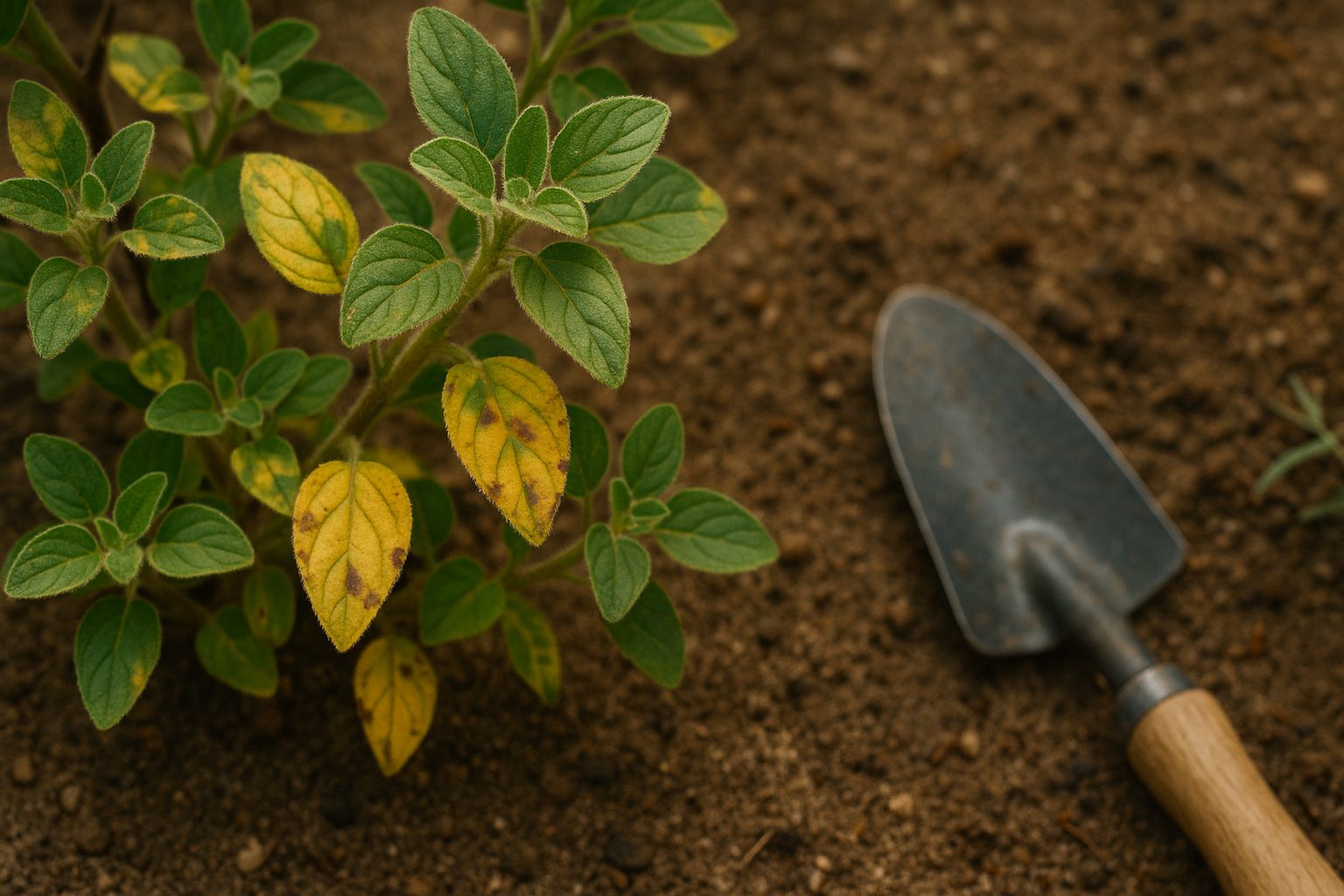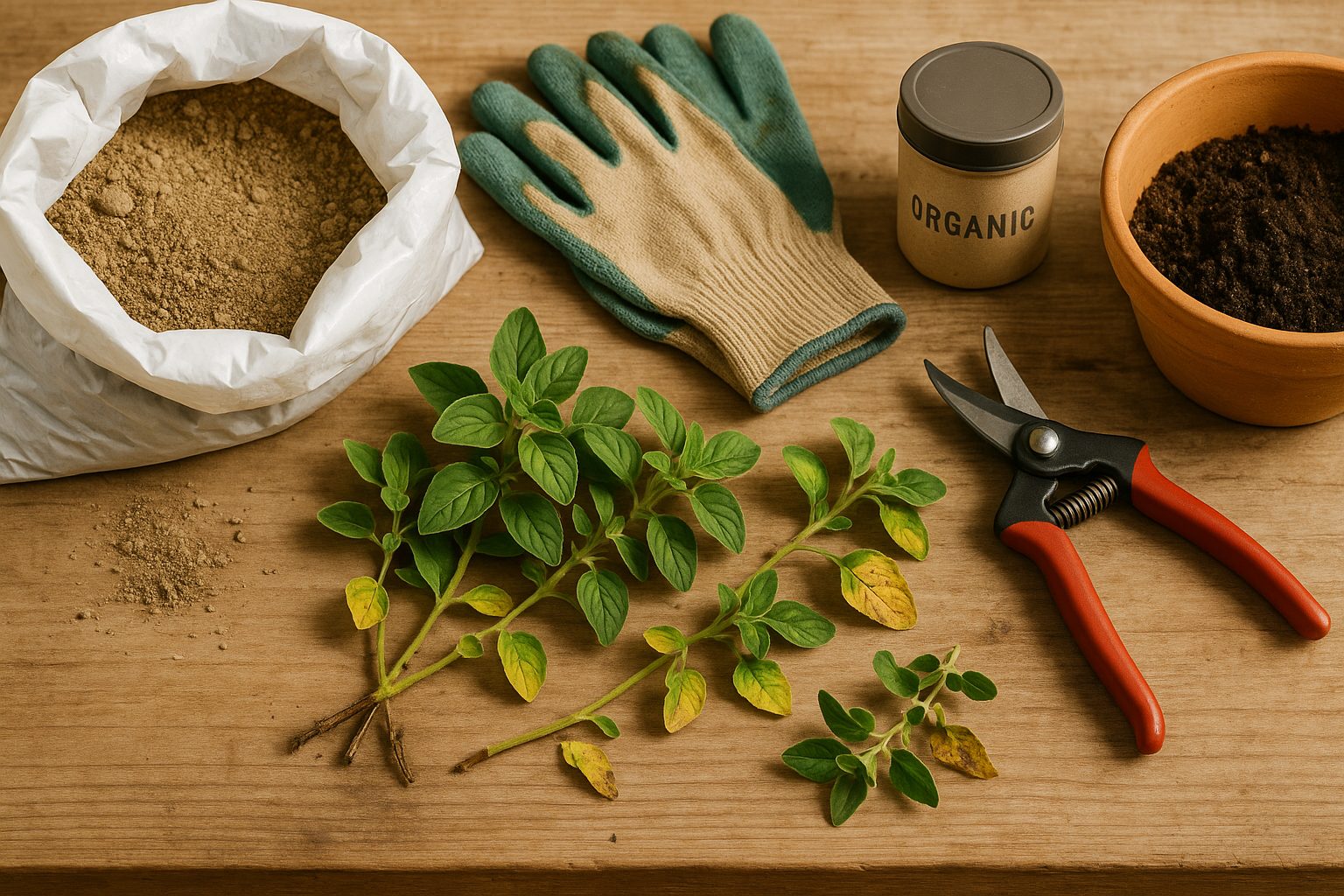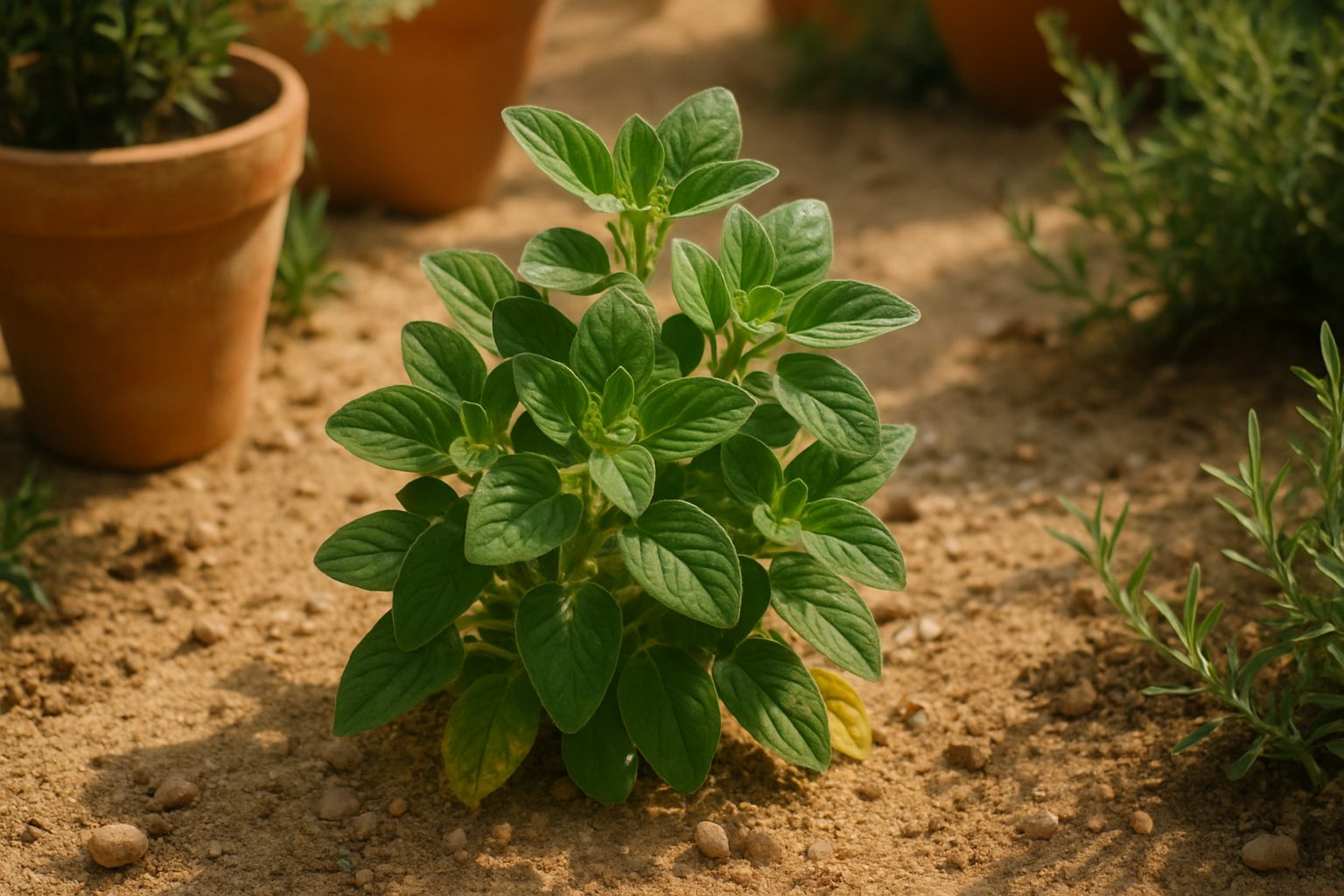Spotting the Problem

Noticing yellow leaves on your Mexican oregano can be a helpful early warning sign, but it’s important to know when to be concerned. While it’s perfectly natural for older leaves to turn slightly yellow and drop off, especially during seasonal changes, widespread or sudden yellowing may indicate more serious problems.
Start by examining the pattern: normal leaf aging usually affects only the lower, oldest leaves and happens gradually. These leaves may yellow evenly, wilt slightly, and fall away as new growth pushes in. If you see yellow leaves scattered throughout the plant, particularly on new or upper growth, or if the yellowing is accompanied by brown spots, curling, or stunted growth, your plant could be facing health issues such as nutrient deficiencies, water stress, pests, or fungal infections.
Catch the problem early by checking your oregano regularly after watering or rain, when leaf colors are easiest to spot. If only a few leaves look faded on older stems and the rest of your oregano seems vigorous, you likely have nothing to worry about. But if you notice large sections of the plant turning yellow, or patchy yellowing between leaf veins or along leaf edges, act fast to prevent further decline. Early detection allows you to correct small issues before they become major threats to your oregano’s health.
Water Woes: Finding the Right Balance for Healthy Oregano
Getting watering right is crucial for robust oregano, as both too much and too little water can spell trouble for this Mediterranean herb. Overwatered oregano may show yellowing leaves, wilting despite wet soil, and roots that smell musty or rotten—clear signs that they’re sitting in soggy conditions with little oxygen. The soil will feel heavy and might even have patches of mold on the surface.
Underwatering, on the other hand, causes oregano leaves to curl, crisp up, or turn brown at the edges, and the whole plant can look droopy and stunted. The soil in this case feels dry to the touch and may pull away from pot edges or become dusty in outdoor beds.
To avoid either extreme, always plant oregano in well-draining soil (like a sandy mix) and use pots with drainage holes or raised beds for outdoor plants. Water the plant deeply only when the top inch of soil feels dry—usually once a week indoors, or more often in hot, windy weather. Avoid letting oregano sit in standing water; instead, let excess drain freely after watering.
If you’re unsure, stick your finger into the soil: if it feels mostly dry up to your first knuckle, it’s time to water. By observing your plant and the soil closely, you’ll develop the right rhythm for thriving oregano.
Soil Matters: Choosing the Right Foundation for Thriving Oregano
Oregano thrives when planted in soil that closely mimics its Mediterranean origins—light, well-drained, and nutrient-rich, with a slightly alkaline to neutral pH, ideally between 6.5 and 7.5. If your garden soil is heavy, compacted, or tends to hold water after rain, your oregano might show signs of distress through yellowing leaves, stunted growth, or fungal problems.
Waterlogged soils suffocate roots and encourage diseases, while nutrient-poor ground can leave oregano looking pale and tired. One simple solution is to amend your soil texture by mixing in coarse sand or small gravel to improve drainage. If you’re dealing with clay-heavy soil, blend in compost or aged manure, which not only lightens and enriches the earth but also boosts beneficial microbial life.
Raised beds or containers filled with quality potting mix can be a lifesaver for tricky spots. For pH balance, a little garden lime can help nudge acidic soils into oregano’s comfort zone; home soil test kits offer a quick way to check if amendments are needed.
By focusing on these practical tweaks, you give your oregano the foundation it needs to grow lush, resist disease, and deliver its famously robust flavor for your kitchen.
Sunlight & Temperature: Creating the Best Environment
Yellowing leaves on oregano often indicate that the plant isn’t getting the right balance of sunlight or is exposed to temperature extremes. Without enough light, oregano can become leggy, pale, and weak, while too much intense midday sun—especially in hot climates—may cause the leaves to yellow or scorch.
Ideally, oregano thrives in full sun—about six to eight hours of direct sunlight per day—whether you’re growing it indoors by a bright south-facing window or outdoors in a sunny garden spot. Temperature is just as important: oregano prefers temperatures between 60°F and 80°F (15°C to 27°C). Cold drafts or frost can shock the plants and turn leaves yellow, so if you’re growing oregano outside, consider using mulch to insulate roots or moving container plants indoors before the first frost.
In summer, provide some afternoon shade or use shade cloth if your area experiences extreme heat; consistently high temperatures can dehydrate and damage the plant. For indoor oregano, avoid placing pots near cold windows in winter or heat vents year-round, as these fluctuations can also stress the plant.
By monitoring light and temperature carefully, you’ll keep your oregano healthy, green, and thriving all season.
Pest and Disease Troubles: Hidden Causes Behind Yellowing
Yellowing leaves on oregano often point to hidden invaders like aphids or spider mites—tiny pests that suck sap and weaken the plant—or pesky fungal diseases such as powdery mildew. You might spot sticky honeydew on the leaves or fine webbing, which are classic signs of aphids and mites. Fungal issues show up as powdery or fuzzy white patches before causing leaves to turn yellow and drop.
Both pests and fungi interrupt how oregano takes up nutrients, leading to discoloration and a slow overall decline in health. To tackle pests safely, spray affected plants with a jet of water to remove bugs, or try insecticidal soap for heavier infestations. Neem oil is a great organic option that works for both pests and mildew.
Tips for Keeping Oregano Healthy
- Plant oregano in well-draining soil.
- Space plants properly to ensure good airflow.
- Water at the base of the plants to prevent leaf wetness.
- Regularly snip off diseased leaves.
- Avoid crowding your herbs.
Prevention Strategies
If you’re growing oregano in garden beds, rotate your garden spots each season. Inspect plants weekly for early signs of trouble. Being proactive with these simple steps will help keep your oregano lush and green, even in challenging conditions.
Quick Fixes & Long-Term Prevention Strategies

If you notice your oregano leaves turning yellow, don’t panic—quick fixes can help your plant bounce back. Start by pruning off any yellow or dead leaves to redirect the plant’s energy toward healthy growth.
If the soil is compacted or waterlogged, consider repotting your oregano with a well-draining potting mix. This improves root health instantly and prevents further stress. Yellowing often indicates nutrient deficiencies, so add a balanced, organic fertilizer or mix in some compost to enrich the soil right away.
For long-term vitality, oregano thrives with consistent care:
- Place the plant in a sunny spot, providing at least 6 hours of sunlight daily.
- Water only when the top inch of soil feels dry, as oregano prefers slightly dry conditions.
- Avoid overwatering to prevent root issues.
- Mulch with straw or bark chips to retain moisture and deter weeds.
To keep problems from coming back, maintain a simple checklist:
- Check soil moisture twice weekly.
- Inspect leaves for pests or discoloration weekly.
- Trim back leggy growth monthly.
- Feed lightly during the growing season.
- Repot every 2–3 years if the plant becomes rootbound.
Following these steps will not only revive yellow oregano quickly but also keep your plants lush and green season after season.
